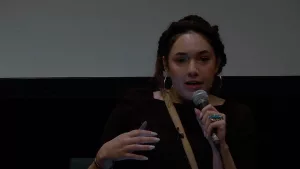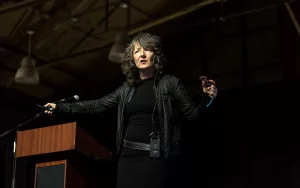Sarah Brin specializes in creative partnerships for technology, games, and entertainment. Her projects are known for their visual appeal, playfulness, and broad audience reach.
Professionally, Sarah has extensive experience in building and leading teams that create unprecedented creative technology experiences. She is also skilled in designing processes and programs for organizations undergoing rapid growth. She resides in London with her big dog, Svenska.
Sarah’s projects consistently demonstrate creativity that excites the public and sparks a desire to learn more. She has developed and led joint ventures and partnerships for prestigious brands such as Sony PlayStation, Rolls Royce, Autodesk, Meow Wolf, the European Union, Microsoft, BBC, Aardman Animation, SFMOMA, Google, and many others. One of her aspirations is to develop creative partnerships for A24 and/or David Byrne.
Her work has earned her a BAFTA nomination and awards from Creative Producers International, Red Dot, and the International Game Developers Association.


